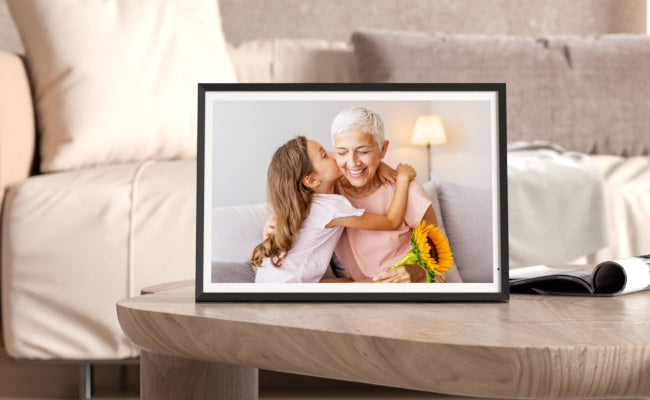Transform Your Google Photos Into a Beautiful Digital Frame Display
Your smartphone probably holds thousands of precious memories captured over the years, but how often do those photos actually get seen? Most of our digital images remain buried in cloud storage, rarely surfacing beyond the occasional scroll through our camera rolls. This is where turning your device into a digital photo frame can breathe new life into your photo collection, allowing you to enjoy your favorite moments every single day.
Understanding Digital Photo Frame Solutions for Google Photos
Google Photos has become the go-to platform for storing and organizing our digital memories, with its generous storage options and powerful search capabilities. The natural next step is displaying these photos in a way that brings them into your daily life. Whether you're looking to repurpose an old tablet, set up a dedicated display in your living room, or create a rotating gallery on your computer screen, there are multiple approaches to creating a seamless photo frame experience.
The beauty of using Google Photos as your source is that all your images are already organized, backed up, and accessible from anywhere. You don't need to manually transfer files or worry about running out of storage on your display device. The connection between your photo library and your frame can be dynamic, meaning new photos automatically appear without any extra effort on your part.
Mobile Apps That Turn Your Device Into a Photo Frame
For those wanting to use a spare smartphone or tablet as a dedicated display, several applications can connect directly to your Google Photos account. These apps typically offer ambient display modes that showcase your images in a slideshow format, complete with customizable transition effects and display intervals.
When selecting an app for this purpose, look for features like album selection, which allows you to choose specific collections rather than displaying your entire library. This is particularly useful if you want to curate what appears on your frame—perhaps only vacation photos, family portraits, or artistic shots. Many apps also include clock and weather widgets that overlay on your photos, adding practical functionality to your display.
Battery optimization is another crucial consideration. Since these devices often run continuously, you'll want an app that includes screen dimming during nighttime hours and doesn't drain power unnecessarily. Some solutions offer motion sensors that wake the display only when someone is nearby, extending the lifespan of your device while reducing energy consumption.
Web-Based Photo Frame Options
If you prefer not to install additional software, web-based solutions offer a compelling alternative. These platforms run directly in your browser and can connect to your Google Photos library through authorized access. This approach works particularly well for desktop computers, smart TVs with browsers, or any device where you'd rather not install dedicated apps.
The advantage of browser-based solutions is their universal compatibility. You can access them from virtually any device with an internet connection and a modern web browser. Many of these services offer fullscreen modes that hide browser toolbars and other interface elements, creating a clean, unobtrusive display that looks just like a physical photo frame.
Customization options in web-based platforms often include layout choices, such as single photo displays, collages, or grid views. You can typically adjust the speed of transitions, add captions with photo details like date and location, and even include simple animations or Ken Burns effects that slowly pan and zoom across images for added visual interest.
My Personal Experience Setting Up a Kitchen Display
Last year, I decided to repurpose an old iPad that had been sitting in a drawer for months. My goal was to create a digital frame for our kitchen counter—a spot where we gather every morning for breakfast and would actually see the photos regularly. After researching various options, I found an app that connected seamlessly to my Google Photos account.
The setup process was surprisingly straightforward. After downloading the app and granting it access to my photos, I created a specific album in Google Photos called "Kitchen Memories" where I curated images I wanted to display—mostly family moments, vacation highlights, and candid shots of our kids growing up. The app pulls from this album exclusively, which means I maintain complete control over what appears.
What truly made the difference was discovering how much joy this simple setup brought to our daily routine. My partner and I now find ourselves pausing mid-breakfast, reminiscing about trips we'd nearly forgotten or laughing at funny moments captured months ago. Even our children love seeing themselves and asking about stories behind the photos. It transformed a dusty old device into something that genuinely enhances our home.
Technical Considerations for Optimal Display
Regardless of which solution you choose, several technical factors will impact your experience. Screen brightness is paramount—you'll want a display that's visible in your room's lighting conditions without being overwhelmingly bright at night. Most quality apps include automatic brightness adjustment or scheduled dimming.
Resolution and aspect ratio also matter. Google Photos stores images in various dimensions, and not all will perfectly fit your screen. Look for solutions that offer smart cropping or letterboxing options to prevent distortion. Some people prefer seeing the entire photo with black bars, while others don't mind slight cropping for a full-frame view.
Network stability is another key factor since these solutions stream images from the cloud. A reliable Wi-Fi connection ensures smooth transitions without buffering or loading delays. If you notice lag, consider adjusting the image quality settings—many apps allow you to balance between high resolution and faster loading times.
Privacy and Security Best Practices
When connecting third-party apps or services to your Google Photos account, always review the permissions you're granting. Reputable solutions will only request read access to your photos and won't ask for ability to delete or modify your library. Check reviews and research the developer before authorizing access to your personal images.
For displays in shared spaces like offices or waiting rooms, consider creating a separate Google account specifically for your photo frame. This allows you to maintain a curated, professional collection without risking exposure of your personal photo library. You can share specific albums from your main account to this dedicated frame account.
Advanced Features Worth Exploring
Beyond basic slideshow functionality, modern digital frame solutions offer increasingly sophisticated features. Face recognition integration can prioritize photos containing specific people, ensuring your closest family members appear more frequently. Location-based filtering might display only photos from certain places, perfect if you want to showcase travel memories or local adventures.
Some platforms now include collaborative features, allowing multiple family members to contribute photos to the same frame remotely. This is particularly valuable for keeping distant relatives connected—grandparents can see new photos of grandchildren automatically, and family members can share moments from their daily lives without needing to send individual messages.
Seasonal and event-based filtering represents another useful capability. Imagine your frame automatically highlighting photos from previous years around holidays or birthdays, creating moments of nostalgic reflection. These intelligent features transform your display from a simple slideshow into a dynamic, context-aware experience.
Choosing the Right Approach for Your Needs
The ideal solution depends on your specific situation. If you have a spare tablet or smartphone, dedicated apps offer the most polish and battery optimization. For desktop displays or smart TVs, web-based solutions provide excellent flexibility without additional software installation. Some users even combine approaches, using different solutions for various displays throughout their home.
Consider starting simple with a basic app or web service, then expanding as you discover what features matter most to you. The most important aspect isn't finding the perfect technical solution—it's creating a setup that brings your photos back into your daily life, where they can be appreciated and enjoyed rather than forgotten in digital archives.
Your memories deserve to be seen, and transforming Google Photos into a living display ensures they become part of your everyday environment rather than pixels lost in the cloud.






